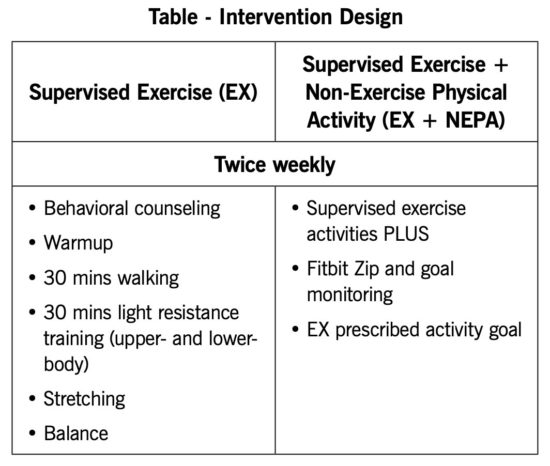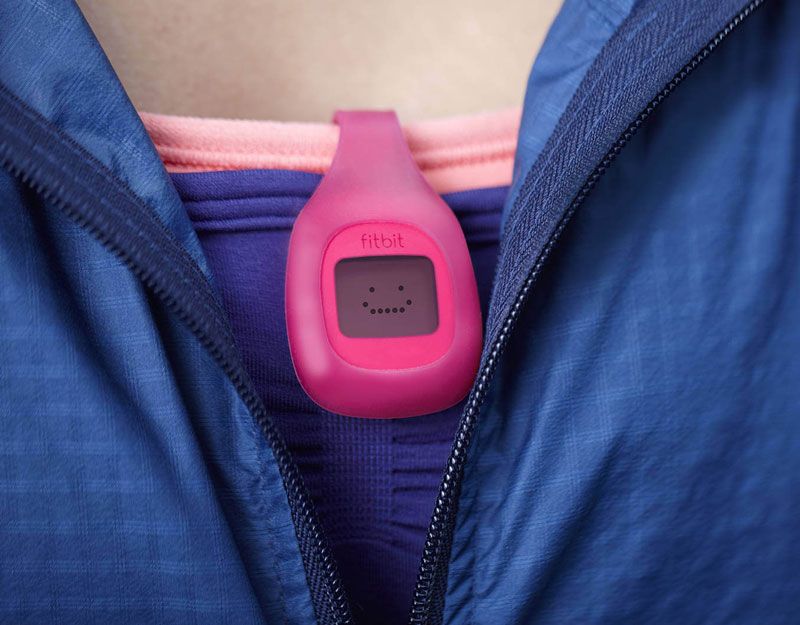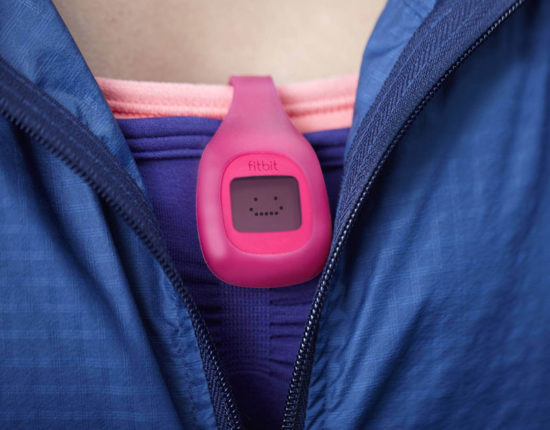By Douglas J. Guth
Combining structured exercise with wearable technology interventions designed to enhance non-exercise physical activity (NEPA) may help reduce cardiovascular disease (CVD) in high-risk older adults, according to a October 2019 study published in the online medical journal, Clinical Interventions in Aging.
Researchers from the University of Alabama at Birmingham and the University of Florida found the addition of wearable tech – in this case a Fitbit Zip® device – appeared to positively influence daily activity patterns and changes in blood pressure for study participants with moderate-to-high-risk of coronary heart disease (CHD) events.
As part of a pilot clinical trial, 40 participants age 60 and older were randomly assigned to groups either relying on exercise alone (EX) or combining structured exercise with an intervention augmenting non-exercise physical activity (EX + NEPA). Both groups were followed for 20 weeks, undergoing twice-weekly aerobic and resistance workouts (see table). The EX + NEPA group also received the Fitbit device alongside behavioral monitoring and feedback, with results for both groups evaluated at 8 and 20 weeks.
A particularly encouraging outcome to researchers is the potential impact of wearable activity trackers on changes in systolic blood pressure (SBP). Observed directional change between the EX and EX+NEPA groups indicated potential improvement of SBP outcomes among those wearing the tracker. Considering blood pressure is a well-established risk factor for CVD, even small reductions in SBP can lead to decreased risk of CVD events and cardiovascular death. Though this difference is likely overestimated in the nature of a pilot trial, it still indicates substantial promise for further follow-up in a larger-scale trial.
“This study is a pilot and the findings must be interpreted cautiously, but the difference of ~10 mm Hg in systolic blood pressure is quite substantial and was tracked closely with the change in steps/day after the cessation of structured exercise,” said study author, Thomas Buford, PhD, associate professor and associate director of the University of Alabama at Birmingham Center for Exercise Medicine. “Given the low cost of the activity monitor and breadth of the population who this intervention approach could be applied to, the potential for impact looks promising.”
 Further results from the pilot suggest that daily activity patterns may be increased by utilizing a wearable tracker. At study close-out, the EX + NEPA group had approximately 2,000 additional steps/day than the EX group. The authors note that their findings align with prior studies showing that even an extra 500 steps taken per day has been associated with a 10% reduction in CVD events, while increased light physical activity in older women points to a reduction in risk for both CVD and CHD. Interestingly, only 18 adverse events were reported overall, with only 1 fall, which was not considered serious.
Further results from the pilot suggest that daily activity patterns may be increased by utilizing a wearable tracker. At study close-out, the EX + NEPA group had approximately 2,000 additional steps/day than the EX group. The authors note that their findings align with prior studies showing that even an extra 500 steps taken per day has been associated with a 10% reduction in CVD events, while increased light physical activity in older women points to a reduction in risk for both CVD and CHD. Interestingly, only 18 adverse events were reported overall, with only 1 fall, which was not considered serious.
Given older adults account for the majority of CVD-related deaths, finding methods to reduce CVD risk among this population is critical.
“It is important to note that the 2 components of the intervention – the structured exercise and the behavior education/activity tracking – likely work together,” said Buford. “The structured exercise period may be critical for instilling the principles of increased activity necessary for maintaining increases in non-exercise physical activity. It remains important to encourage regular structured exercise while also emphasizing the independent benefits of simply being more active as a part of daily routines.”
Douglas J. Guth is a freelance writer based in Cleveland, Ohio.
Source: Roberts LM, Jaeger BC, Baptista JL, et al. Wearable technology to reduce sedentary behavior and CVD risk in older adults: A pilot randomized clinical trial. Clin Interv Aging. 2019;14:1817-1828.








